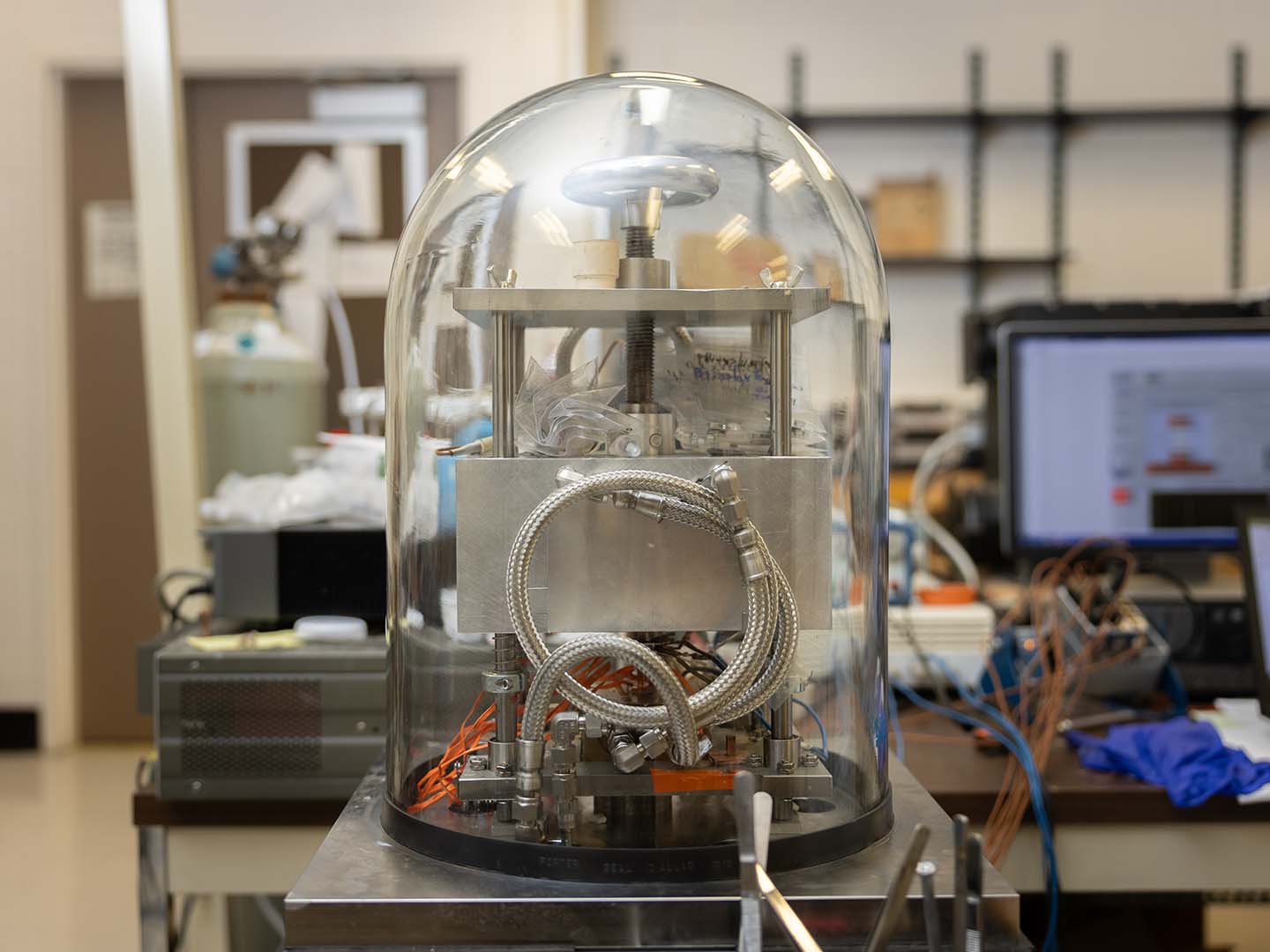2024-05-16 ヒューストン大学(UH)

The research team’s homemade energy conversion efficiency measurement device that can also measure the temperature of the cooled side.
<関連情報>
- https://uh.edu/news-events/stories/2024/may/05162024-thermoelectric-materials-electricity.php
- https://www.science.org/doi/10.1126/science.adn7265
Zintlsにおける高性能熱電発電のためのグローバルバンド収束設計 Global band convergence design for high-performance thermoelectric power generation in Zintls
XIN SHI, SHAOWEI SONG, GUANHUI GAO, AND ZHIFENG REN
Science Published:16 May 2024
DOI:https://doi.org/10.1126/science.adn7265
Editor’s summary
Zintl materials can be attractive for thermoelectric applications because of their wide range of compositions and tunable properties. Shi et al. devised a method to quickly find which materials from four parent compounds have electronic band structures that improve thermoelectric performance. After identifying several compositions, the authors showed that the best of these has good long-term and high temperature stability. This compound can be paired with another zintl material to make a device that has attractive thermoelectric performance at midrange temperatures. —Brent Grocholski
Abstract
Electronic band convergence can have a beneficial impact on thermoelectric performance, but finding the right band-converged compositions is still time-consuming. We propose a method for designing a series of compositions with simultaneous band convergence in the high-entropy YbxCa1−xMgyZn2−ySb2 material by zeroing the weighted sum of crystal-field splitting energies of the parent compounds. We found that so-designed compositions have both larger power factors and lower thermal conductivities and that one of these compositions exhibits a large thermoelectric figure of merit value in comparison with to other p-type Zintls. Our material shows high stability both thermally and temporally. We then assembled an all-Zintl single-stage module, nontoxic and free of tellurium, that demonstrates an exceptional heat-to-electricity conversion efficiency exceeding 10% at a temperature difference of 475 kelvin.



